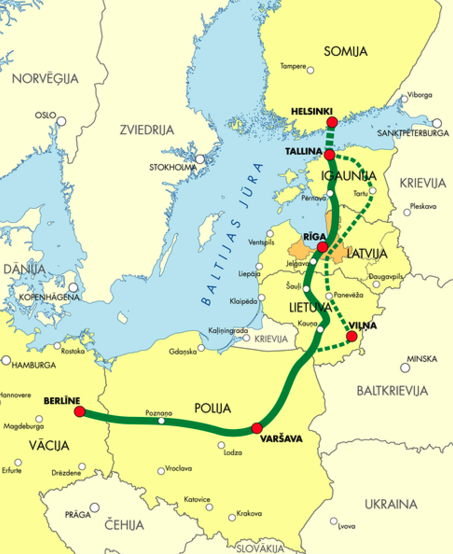Sleeping Spot Via Baltica
The project for the construction of section Bialystok – Augustow – Budzisko of the Via Baltica express road was placed on the indicative list of major projects of Operational Programme “Infrastructure & Environment” 2007- 2013 .The total project cost was 1,828.08 million PLN (€ 457 million). Implementation of the project was planned for 2011-2015.
Key Natura 2000 sites in North-East Poland have been under threat from damage by a series of road projects on the so called ‘Via Baltica’ international road corridor, which would link Helsinki to Warsaw via Estonia, Latvia and Lithuania.
The corridor upgrade was taking place as a series of separate individual projects (an approach commonly referred to as ‘salami-slicing’) rather than being planned in a strategic way. When the individual projects are being planned, the obligations of the nature Directives were not being properly taken into account. The sites currently under serious threat include Knyszyn Primeval Forest and the famous Biebrza Marshes. The pristine Rospuda Valley in Augustow Primeval Forest was also threatened; but after years of campaigning, this is now safe, thanks to BirdLife International and other NGOs! We recognise the need for transport infrastructure improvements in North-East Poland, but believe that these must be planned in accordance with European law in order to ensure that the projects are sustainable projects and that they incorporate consideration for the environment.
It was difficult to understand why at that time the Polish national and regional authorities were forcing the route option which was environmentally controversial, while a more environmentally friendly and less costly alternative was available. In contrast to Rail Baltica, the expressway Via Baltica is not a TEN-T Priority project.

Rail Baltica is the sustainable sound alternative to the planned Via Baltica expressway. Via Baltica has been involved in a large number of controversies because of environmental concerns, as its separate sections would cut through the unique wetland ecosystems in Poland, which are protected by Bird and Habitats Directives.
Rail Baltica links four new EU Member States – Poland, Lithuania, Latvia and Estonia – as well as Finland. In addition, it is the only rail connection between the three Baltic States themselves, to Poland and to the rest of the EU. To the north, Helsinki is connected by rail ferry services across the Gulf of Finland which can form a “bridge” to the countries of the Nordic Triangle (PP12). The length of the current track is approximately 1,200 km by the most direct existing route from Tallinn to Warsaw. A variety of track and operating systems are currently in use: single and double track, electrified and non-electrified (of which single track non-electrified is the most common system). The line passes through a variety of different terrains – urban areas such as the cities of Białystok, Kaunas and Riga, and rural areas such as in the Podlaskie region of northeast Poland and southern Lithuania, as well as northern Latvia and the south of Estonia. Rail Baltica also connects three major Baltic seaports: Helsinki, Tallinn and Riga, and has a short rail connection to a fourth – Klaipeda.
The section from Helsinki to Tallinn will be operated by existing commercial ferries. In the future a proposed Helsinki to Tallinn Tunnel could provide a rail link between the two cities. The length of the railway between Tallinn and Warsaw will be at least 950 kilometres (590 miles).


